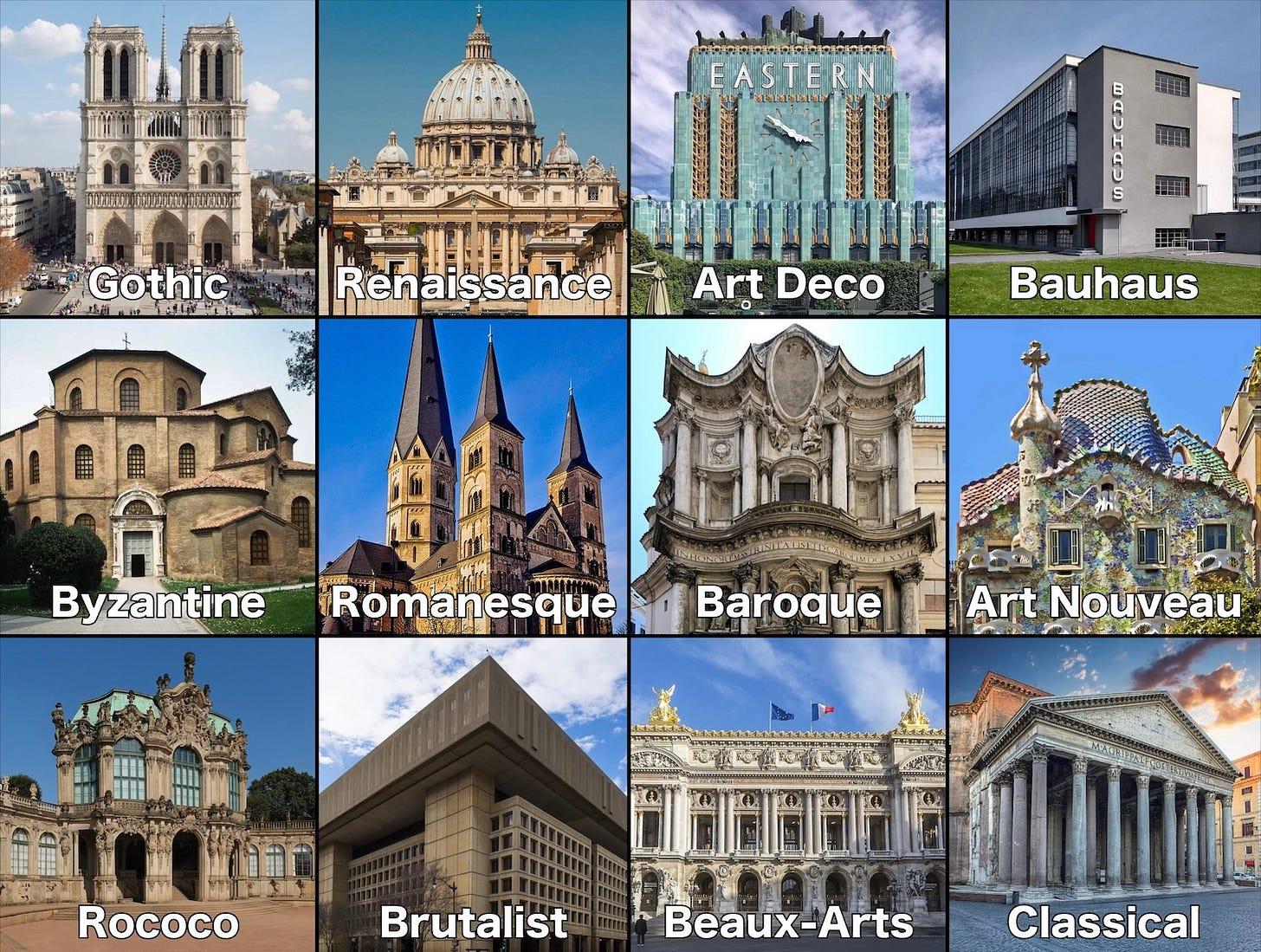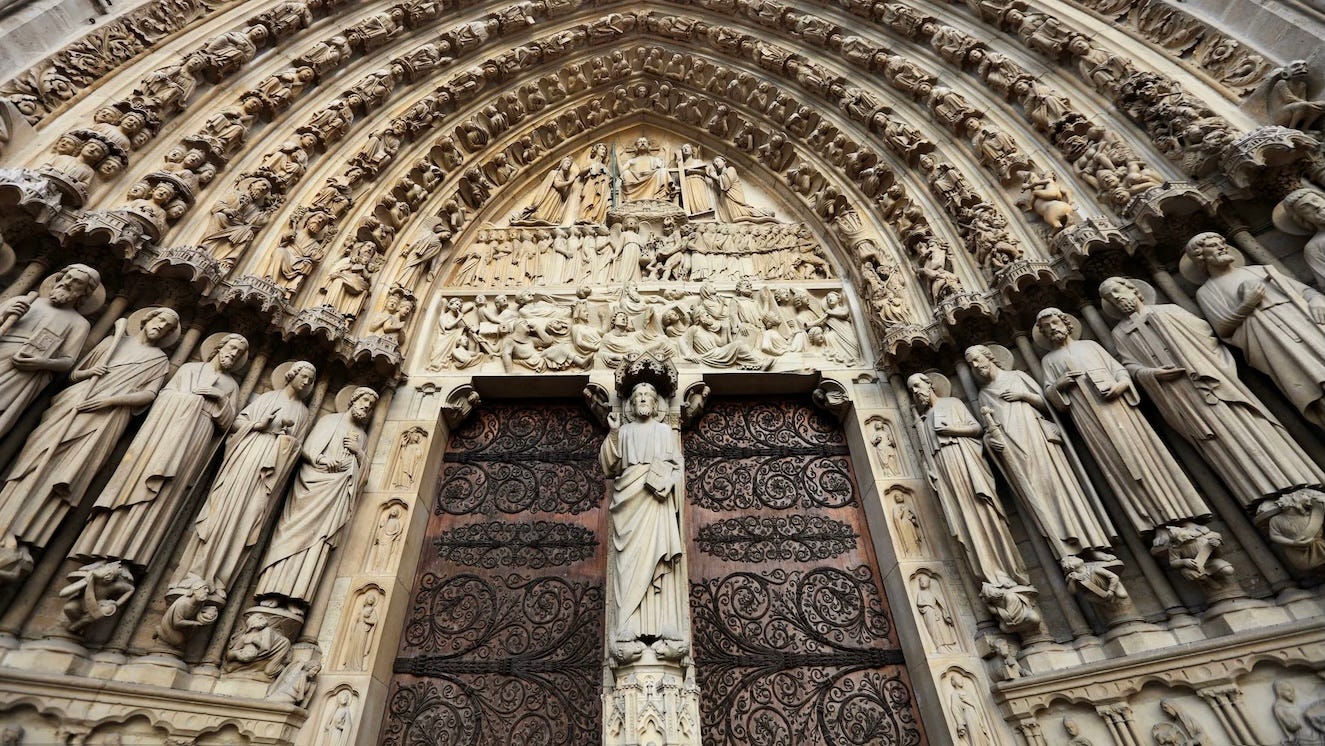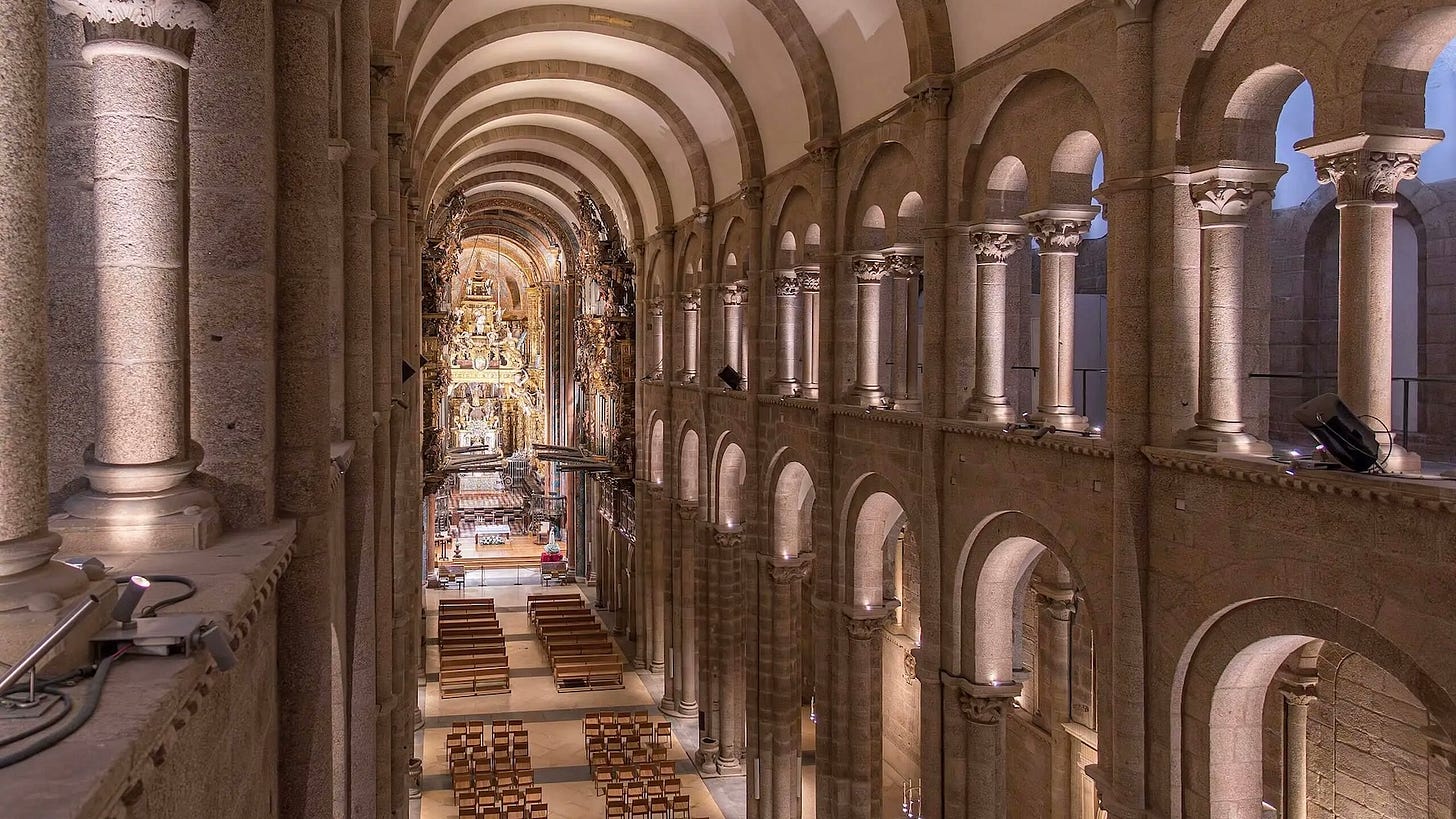When Did Architecture Peak?
Ruskin's 7 rules of architecture
When did architecture reach its peak?
For the Victorian thinker John Ruskin, the answer wasn’t with Greek temples or Renaissance palazzi. Rather, it was with the Gothic — the majestic, soaring cathedrals of medieval Europe.
But why?
In The Seven Lamps of Architecture (1849), Ruskin argued that architecture should not be judged merely by utility or proportion, but by moral vision. The best buildings, he wrote, are physical expressions of virtue — virtue rooted in sacrifice, truth, memory, and reverence for tradition.
Ruskin called these principles the “lamps” of architecture. And for him, no style burned more brightly than the Gothic. Today, we explore why…
Reminder: you can support our mission and get tons of members-only content for a few dollars per month:
Full-length articles every Wednesday and Saturday
Members-only podcasts and exclusive interviews
The entire archive of great literature, art, and philosophy breakdowns
1. Sacrifice
According to Ruskin, architecture must be a form of offering, a true labor of love. The building itself should bear visible witness to the time, effort, and devotion poured into its creation.
Contrast this with the modern approach to construction, which tries to achieve the greatest scale for the lowest price. For Ruskin, the “unnecessary” details that get left out in modern builds were in fact the most essential, because they implied the most sacrifice.
In Gothic architecture, these details shine through in the hand-carved gargoyles, delicate patterns in stone and glass, and the hidden angels tucked beneath the eaves. By detailing the places no one would ever see unless they looked, the artists behind Gothic structures proved that much time and effort — or in other words, love — was poured out in their construction.
2. Truth
Ruskin’s second “lamp” was that great architecture has to tell the truth. It can’t lie by pretending to be something it’s not.
In Gothic buildings, the materials are real and honest. The stone is exposed, not concealed by plaster or paint. Instead, the structure of the building publicly proclaims itself, as functional arches, columns, and vaults are highlighted and celebrated in its design.
This kind of truth in architecture is what gives Gothic architecture its dignity. Nothing about it is faked, and that’s a large part of what makes it beautiful.
3. Power
Great architecture should command your attention. It should hold you in awe, and make you consider the power that inspired its creation.
According to Ruskin, Gothic cathedrals were designed to make you do precisely that. Their pointed arches, soaring spires, and tall stained-glass windows create a sense of spiritual intensity that can feel overwhelming.
The combination of it all forces you to stop and consider what lies beyond — and how you ought to order your life in light of it.
4. Beauty
Ruskin believed beauty is found in nature, which is why great architecture must reflect that natural world.
Here again, Gothic architecture was made to mirror God’s creation. Columns resemble tree trunks, capitals echo foliage, and the stonework around stained-glass windows recalls everything from rose petals to the cosmos (the apse of Milan’s Duomo is a great example).
All of this was used as a way of drawing the natural world into a sacred space. Gothic cathedrals themselves became kinds of living gardens — ones shaped by human hands, and grounded in forms that point back to creation.
5. Life
Ruskin firmly believed a building should convey the vital energy of the people who made it.
In Gothic architecture, this energy is preserved in every stone. Neither engraving nor sculpture is perfectly uniform, but each stone bears the mark of an individual craftsman. Often built over hundreds of years, each cathedral tells the story of the community that raised it.
In this sense, Gothic cathedrals are bursting with life — the life of the men and communities who built them, working together for generations to the greater glory of God.
6. Memory
Great architecture, Ruskin maintained, should connect you to the past. He reasoned that Gothic cathedrals do this in two ways:
First, they carry forward the forms of earlier styles, creating a visible link across generations. The Gothic style, for example, evolved from the earlier Romanesque, transforming its defining arches for new architectural ambitions.
But second, and more importantly, Gothic cathedrals are filled with symbols that evoke Scripture, myth, and the ancient world. Every decoration and adornment reaches back into the past to tell a story, and invites you to step into the Great Tradition being passed down to you. It is shared cultural memory at its best.
7. Obedience
Ruskin’s seven principles of architecture conclude with obedience to timeless traditions.
Just as originality in poetry doesn't rely on the invention of new words, or in painting the invention of colors, great architecture doesn’t need to invent a new visual language. Gothic is a great example of this, emerging from a shared tradition to build on forms which had been refined over centuries.
While modern architecture often places originality above all else, Gothic reminds us that true beauty doesn’t come from breaking with the past. It instead comes from faithful innovation that maintains continuity with the past, and honors those who came before.
Remember, you can support us and get members-only content every weekend: great literature, art, and philosophy breakdowns.
Paid readers can access our *entire* archive of premium articles right here.
In the last year, we’ve written about everything from Dante’s Divine Comedy, to the history of the Eternal City of Rome, to the coded messages in Leonardo da Vinci’s art…









I would also add...how does architecture make someone inside feel and even behave: it should hold and move and inspire.... not just the exterior. And s interesting to think of when architecture peaked. Most modern architecture lacks the inspiring grandeur that classical architecture moves me with, and certainly the sense of detail and craftsmanship that awes me with what the human hand can achieve.
And the great Gothic cathedrals were built literally over generations and even centuries. They were living embodiments of the teaching that heaven is a communal goal and aspiration. The architects were usually unknown to history and the builders anonymous members of guilds. All was for the glory of God. I would say the Sagrada Familia in Barcelona - although not Gothic - was intended by Gaudi to be built over centuries in accordance with this tradition. The modern world ruins everything in its narcissistic need for "earlier completion". Using modern machines to accelerate the construction, which should have taken centuries, would not have been what Gaudi wanted.